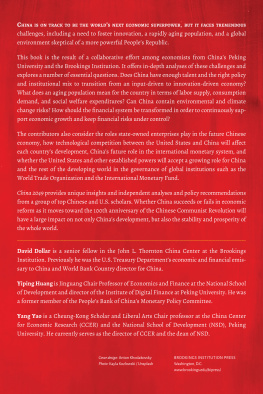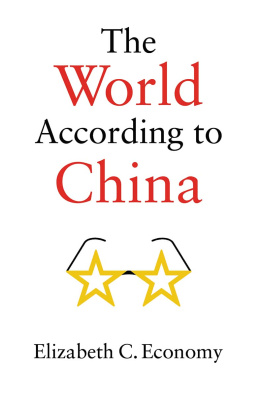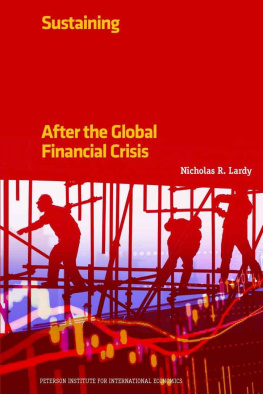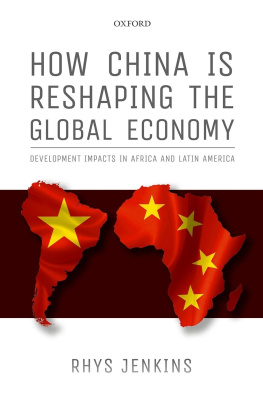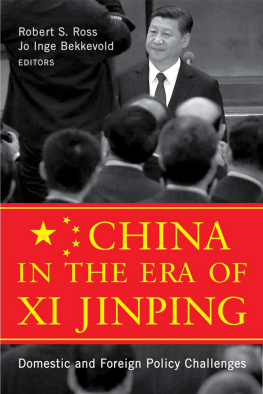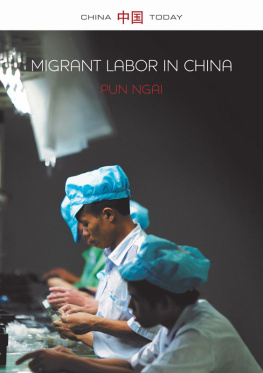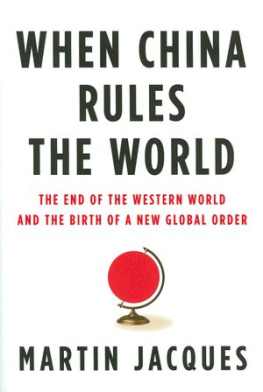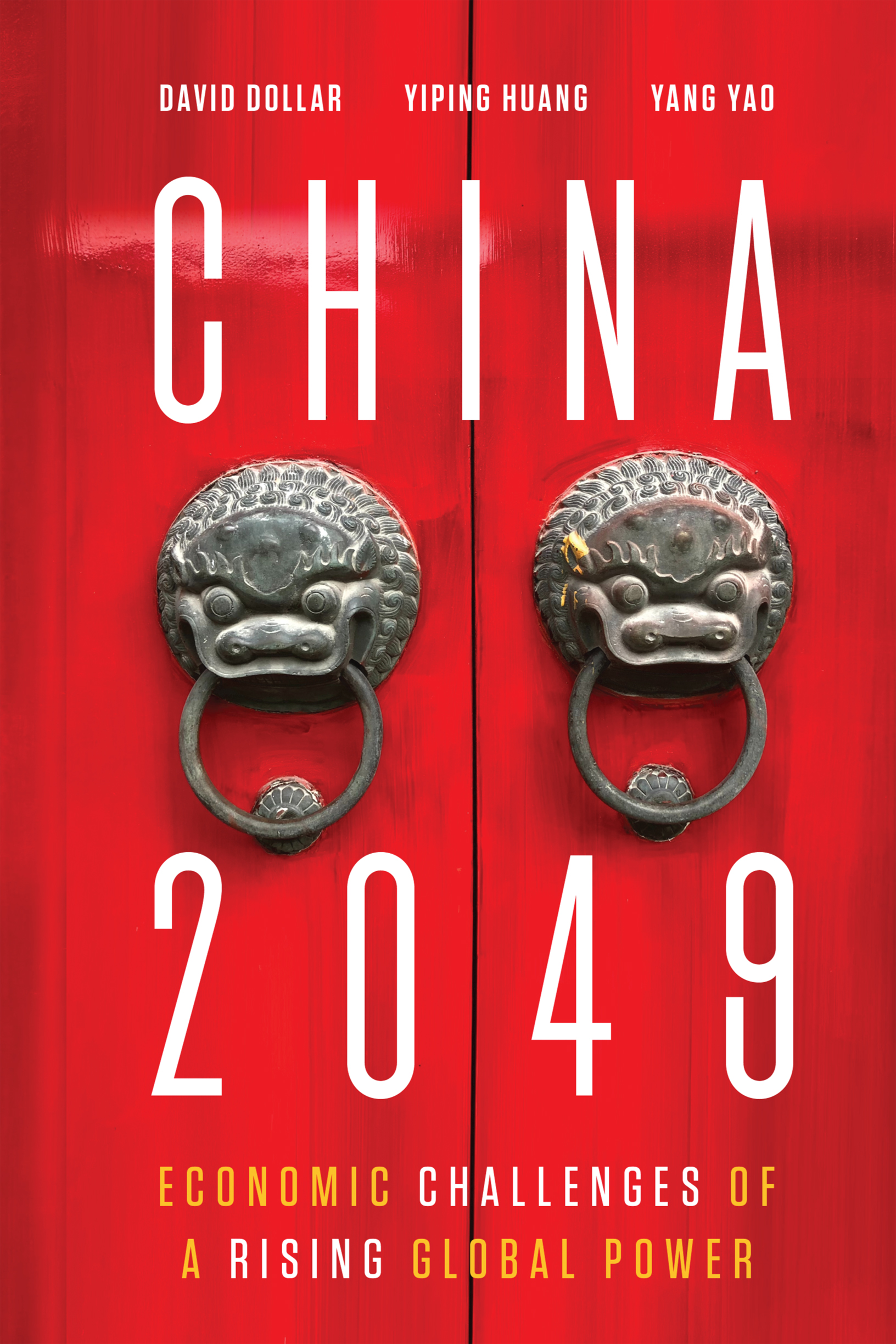Contents
Guide
Pagebreaks of the print version
CHINA 2049
ECONOMIC CHALLENGES OF A RISING GLOBAL POWER
Edited by
DAVID DOLLAR
YIPING HUANG
YANG YAO
BROOKINGS INSTITUTION PRESS
Washington, D.C.
Copyright 2020
THE BROOKINGS INSTITUTION
1775 Massachusetts Avenue, N.W.
Washington, D.C. 20036
www.brookings.edu
All rights reserved. No part of this publication may be reproduced or transmitted in any form or by any means without permission in writing from the Brookings Institution Press.
The Brookings Institution is a private nonprofit organization devoted to research, education, and publication on important issues of domestic and foreign policy. Its principal purpose is to bring the highest quality independent research and analysis to bear on current and emerging policy problems. Interpretations or conclusions in Brookings publications should be understood to be solely those of the authors.
Library of Congress Cataloging-in-Publication Data
Names: Dollar, David, editor. | Huang, Yiping, 1964 editor. | Yao, Yang, 1964 editor.
Title: China 2049 : economic challenges of a rising global power / edited by David Dollar, Yiping Huang, Yang Yao.
Description: Washington, D.C. : Brookings Institution Press, [2020] | Includes bibliographical references and index.
Identifiers: LCCN 2019048113 (print) | LCCN 2019048114 (ebook) | ISBN 9780815738053 (paperback) | ISBN 9780815738060 (epub)
Subjects: LCSH: Economic forecastingChina. | ChinaEconomic conditions2000 | ChinaEconomic policy2000
Classification: LCC HC427.95 .C4352 2020 (print) | LCC HC427.95 (ebook) | DDC 330.951dc23
LC record available at https://lccn.loc.gov/2019048113
LC ebook record available at https://lccn.loc.gov/2019048114
9 8 7 6 5 4 3 2 1
Typeset in Minion Pro
Composition by Elliott Beard
Contents
YAO YANG
XUN WANG
CHEN BAIXIAOYAN LEI
KEJUN JIANG, XIN TIAN,JINTAO XU
YIPING HUANG
SHUANGLIN LIN
MIN WANGXIUMEI YU
LIXING LI
GAOSI CHUGUANGSU ZHOU
SHILIN ZHENG, QINQIN ZHUANG,YONG WANG
YONG WANG
MIAOJIE YUTENGLONG ZHONG
DAOJIONG ZHATING DONG
PETER A. PETRI
ESWAR PRASAD
DAVID DOLLAR
Preface
NATIONAL SCHOOL OF DEVELOPMENT, PEKING UNIVERSITY
THE BROOKINGS INSTITUTION
In 2012, the Chinese government announced Two Centennial Goals. The first is to double the 2010 GDP and per capita income for both urban and rural residents by 2021, the year when the Chinese Communist Party (CCP) celebrates its centenary. And the second is to build China into a fully developed country that is prosperous, powerful, democratic, culturally advanced, and harmonious by 2049, the year when the Peoples Republic of China (PRC) celebrates its centenary. It looks that China is well on track to achieve the first Centennial Goal, as its GDP grew by 7.4 percent per annum between 2010 and 2018 and it plans to eliminate poverty completely by 2020.
There are greater uncertainties, however, surrounding the path to the second Centennial Goal. China ascended successfully from one of the worlds poorest economies in 1978 (GDP per capita at less than US$200) to a high middle-income economy in 2018 (GDP per capita close to US$10,000). And according to projections by this volume, under reasonably favorable conditions, Chinas GDP per capita, using purchasing power parity (PPP) measures, relative to that of the United States may rise from about one-quarter in 2018 to around two-thirds in 2049. However, the growth trajectory in reaching the middle-income level and achieving the high-income status could differ significantly, when viewed from key growth drivers and internal and external constraints for growth.
The purpose of this volume is to take stock of the new economic challenges for China when it sets out to achieve the second Centennial Goal over the coming three decades. While the various chapters examine transformation of different sectors and aspects of the economy, they focus on the central theme of China becoming a new global economic power. Specifically, these analyses seek to address three common questions: What contributed to Chinas past economic success? What are the most important new challenges for China and the world as China continues to ascend in the coming decades? What policies should China adopt to both facilitate rapid growth of their economy and accommodate it in the global system?
KEY DRIVERS OF PAST ECONOMIC GROWTH
After establishment of the PRC in 1949, the Chinese government adopted various policy schemes in an attempt to modernize the economy, including the socialist transformation program and the urban industrialization strategy, starting from the mid-1950s. While paces of economic development were, at times, decent and even remarkable, the central planning system was largely unsuccessful in boosting income levels during that time. This eventually led to the start of economic reform from the end of 1978, which dramatically improved economic performance. Real GDP grew by an average of more than 9.8 percent during the period 19782008, which was often referred to as the China miracle.
So what contributed to this economic success during earlier decades of economic reform? The foremost driver was the reform policy, or transition from the central planned system to a free market economy. This transformation significantly increased both allocative efficiency, through better allocation of resources, and technical efficiency, through better use of resources in the same production activities. Adoption of a household farming system in the countryside in the early 1980s, for instance, led to immediate jumps of grain output, as the new scheme helped establish a direct link between efforts and rewards. Again, migration of rural surplus labor to the urban area both raised average labor productivity and supported expansion of industrial production. According to analysis in this volume, improvement in total factor productivity (TFP) roughly accounted for about four-tenths of Chinas GDP growth in the period 19962015.
A related factor was the open-door policy, or rapid integration of the Chinese economy into the world. The start of Chinas economic reform coincided with the wave of globalization. The combination of the two processes enabled China to participate deeply in the international division of labor. Relying on its low-cost advantage, China quickly rose to be one of the worlds major exporters, especially in markets for labor-intensive manufacturing products. The ratio of exports to GDP increased from well below 10 percent in 1978 to 37 percent in 2007. And for almost two decades starting from 1993, China was among the worlds largest recipient countries of foreign direct investment (FDI). Its accession to the World Trade Organization (WTO) at the end of 2001 not only further reduced Chinas trade and investment barriers, but also accelerated domestic structural reforms. In short, China was one of the main beneficiaries of globalization, especially during the first three decades of economic reform. And the world economy contributed export markets, investment funds, and production technologies to China.

